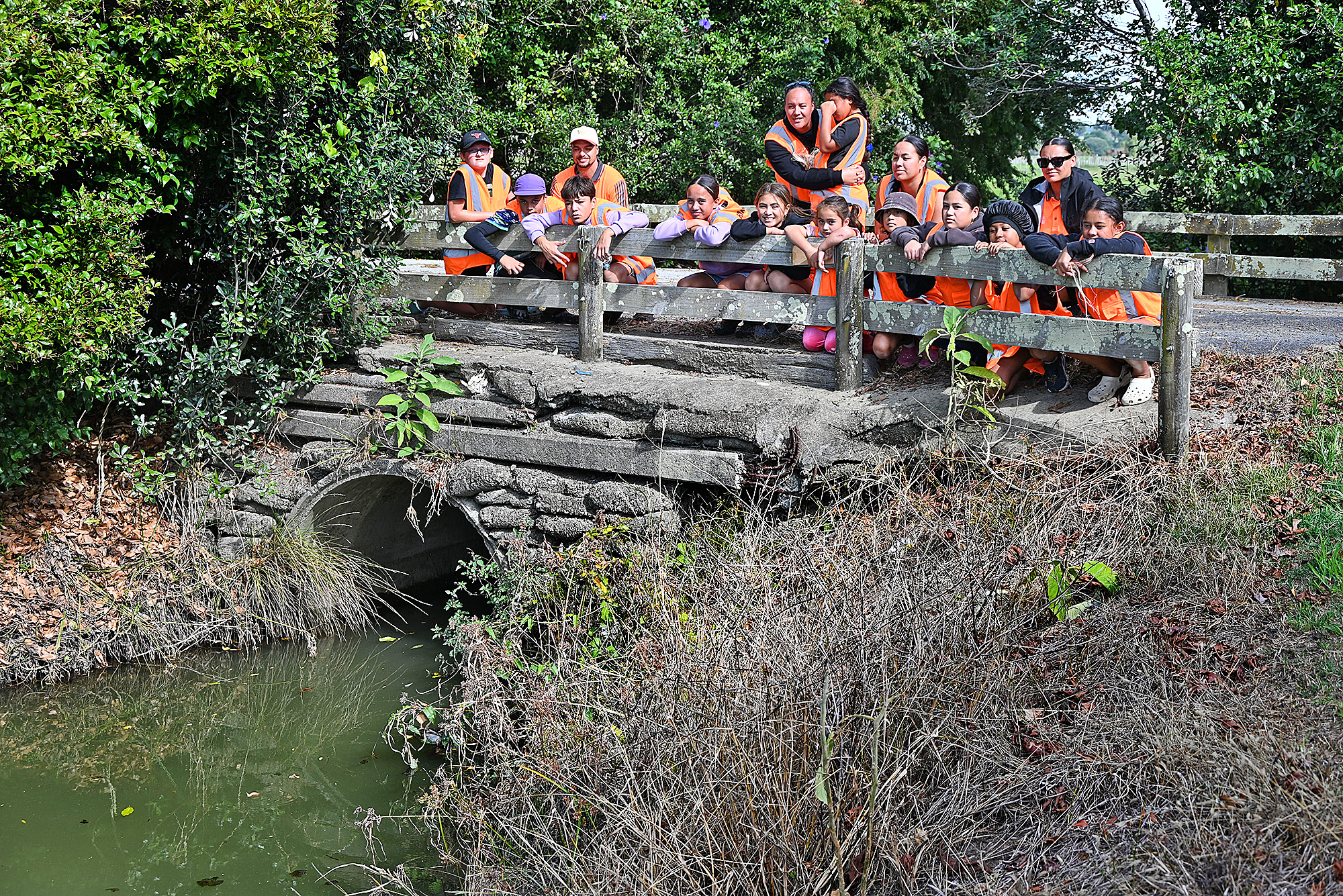Learning about the environment

MURKY WATERS: Last Tuesday six- to 12-year-olds studied freshwater environments, including this degraded stream behind the skate park.
News Editor
Children were encouraged to abandon their devices to study the environment during a school holiday activity held at Ōpōtiki last week.
Toiora environmental manager for Whatatōhea Logan Bertram led the four-day programme for six- to 12-year-olds, which aimed to reconnect their tamariki with the great outdoors.
On the first day, ngahere (bush) activities included the threat invasive plant and animal species represented to native flora and fauna.
The children set tracking cards to identify what pests were active in the patch of bush they visited and these later revealed that lots of rats were present. They then worked out the best way to manage eliminating these pests. In Hukutaia Domain, youngsters found painted stones, later collecting stones to paint to recall what they had learned each day of the programme.
“Hopefully they will take those home to a loved one, or we’ll return them to Hukutaia for other children to find.
On the second day, children learned about freshwater environments, examining near-pristine environments in the Marawaiwai Scenic Reserve, in the Waioweka Gorge, and a “not so healthy one” just behind the skate park in town. Some children caught eels for the first time, also identifying and counting populations of native fish species in streams they visited.
The next day comprised visits to salt marshes and coastal estuaries. This exercise was designed to show the tamariki the importance of wetland areas for providing water filtration and flood protection.
“On the last day we visited a restoration project at the kiwi hatchery in Rotorua. The children saw kiwi running around in an artificial nocturnal setting. Staff showed them how kiwi eggs are collected and the young birds nurtured before returning them to their natural bush environment. Many of the values we talked about during the week were exemplified in this conservation project.
“Basically, we are trying to foster the next generation with kaitiaki values. This can be as simple as taking rubbish to a bin instead of dropping it on the ground as if it’s nothing.
“Through my time in the role, I have noticed a massive gap in the age of people who are participating in kaitiaki-type programmes, such as removing waste from the sides of the road, or volunteering for trapping and restoration projects. There’s a lot of grey hair in the room when you go to those types of things.
“At present we’re identifying the most important projects in the light of the need for succession. Ultimately, many of the things we are doing now will only be as valuable as the ability for the next generation to pick up and run with them in future.
“The aim is to slowly build up a knowledge base among our kids that hopefully they will retain. In a group of 20 children, there may be only two or three who take this on completely, but all are touched by the message. Seeds sown now may germinate later.
"This programme was based around reconnection to our taiao and to nurture and grow kaitiakitanga values amongst our next generation."
Mr Bertram said Whatatōhea’s future environmental programmes would be tailored specifically to the needs of tamariki and rangatahi, offering more of a hands-on approach in the latter group. Meanwhile, future environmental programmes for adults would comprise practical exercises, plus more in-depth learning.